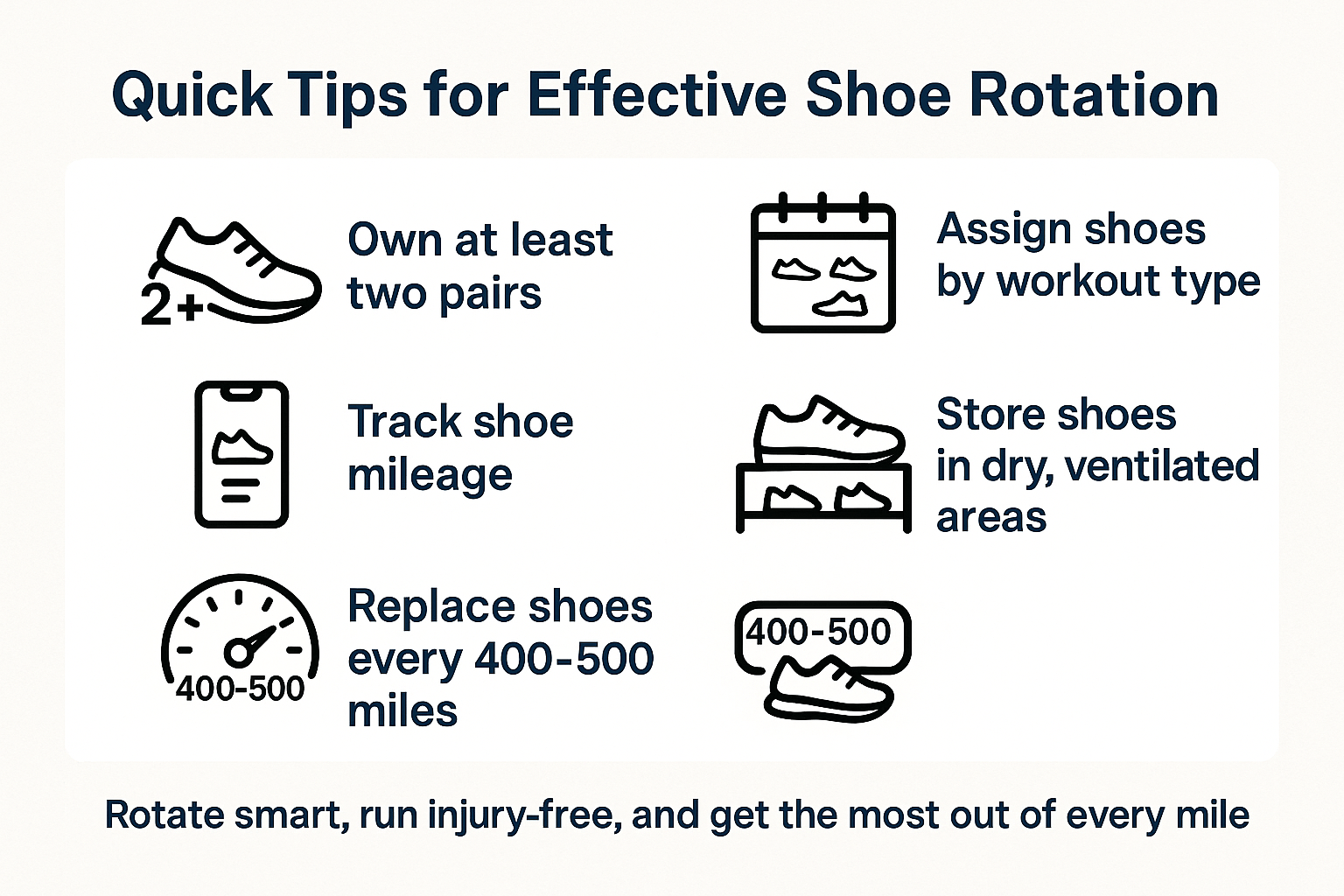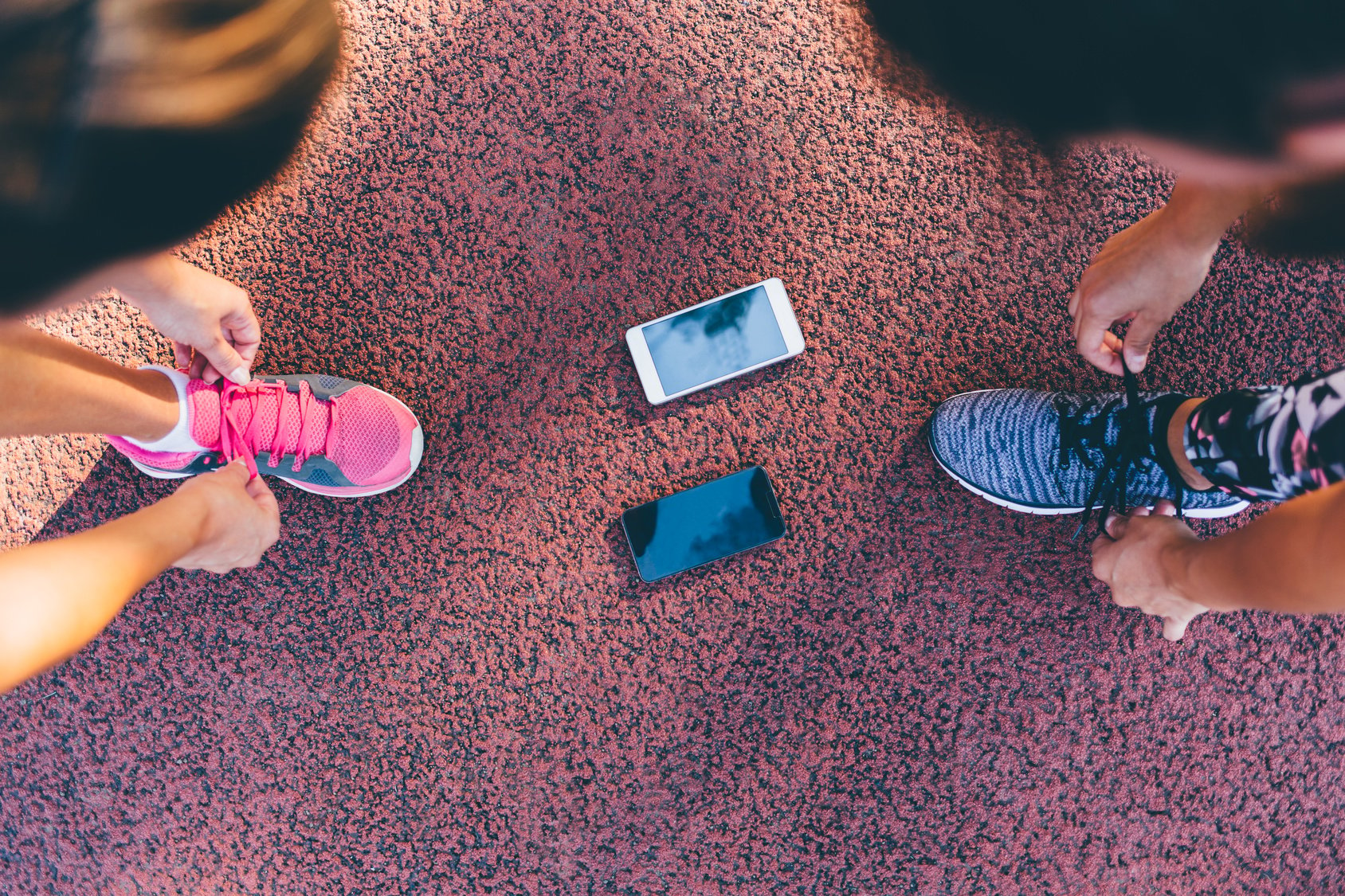You’ve probably heard that rotating shoes is just a “runner’s myth,” right?
But trust me, it’s not.
I get it—who wants to deal with switching shoes all the time?
Here’s the thing—if you want to lower your injury risk by almost 39%, rotating shoes is the way to go (check the science here)
I ignored this advice for way too long.
I used to run in the same pair until the soles were practically hanging off.
Thought I could power through it, but, yeah, my knees and hips quickly reminded me that they don’t like that kind of treatment.
IT band pain? Check.
Knee flare-ups? Check.
Once I started rotating shoes, my pain started to fade. Don’t me wrong – I’m not implying that all my running pains disappeared, but I felt the difference.
Let’s break down the reasons behind why you should be shoe-rotating as well as how to do it right.
What’s the Big Deal with Rotating Running Shoes, Anyway?
Running puts a lot of strain on your body. Every. Single. Time. Switching shoes is like giving your body a quick rest, which it really needs.
When you switch shoes, you change the way your body takes the impact, and that helps prevent injuries. It’s a simple fix, and it works!
You wouldn’t wear the same pair of socks for a week straight, would you? So why do it with shoes? Trust me, your feet (and your body) will thank you.
Now let me get into the science part. I promise you it’s not as boring as it sounds.
How Rotating Shoes Prevents Injuries (Science-Backed Proof)
Here’s the deal: if you’ve heard that rotating your running shoes can help prevent injuries, that’s not just old runner’s wisdom — there’s solid science backing it up now.
A fresh study from Luxembourg tracked 264 regular runners over 22 weeks and found that those who switched between several pairs of shoes had 39% fewer injuries than those who mostly stuck to just one pair.
To break it down: about half of these runners mainly ran in just one shoe—like 91% of their miles in basically the same kicks. The other half rotated through around 3 or 4 pairs, mixing things up a lot more.
And the injury difference? Pretty clear. The shoe-rotators came out way better off.
Why? Well, different shoes shift the way impact hits your legs.
One pair might hit your calves harder, another your knees, or change how your stride feels.
By rotating shoes, you spread out that pounding, giving your tissues a break and lowering the chance of overuse injuries.
The researchers aren’t 100% sure which shoe features matter most here — midsole firmness, height, or shape — but they’re confident that mixing it up forces your legs to move differently each run. That variety seems to keep you safer.
Running in the same shoes means your joints take the same hit with every step. But rotating shoes gives your body a break by changing how it handles each run.
One day you get more cushion, the next day less—your body gets some needed relief.
If you’re feeling aches and pains that keep popping up in the same spot, your shoes might be more to blame than your mileage.
How Many Shoes Should You Have in Your Rotation?
So, you’re ready to start rotating shoes? At least two pairs, but three is even better if you’re running a lot.
- Two pairs: Perfect if you run 3-4 times a week.
- Three pairs: Great for heavy mileage, different terrains, or if you’re training for a marathon.
In other words, if you’re running 3-4 days a week, two pairs are enough. For higher mileage or specific races, aim for 3-4 pairs in rotation. The key is keeping things fresh—not just for your shoes, but for your body too.
Quick Advice: Have one pair for speedwork, one for longer runs, and another for recovery or trails. Trust me, your body will thank you. Different shoes for different runs? It’s a total game-changer. You wouldn’t wear trail shoes on the road, would you? And you wouldn’t wear road shoes on the trails either.
Rotation Based on Running Experience
Let’s dive into how shoe rotation changes depending on your experience level.
For Beginners:
If you’re just starting out, I get it, one pair of shoes might seem like enough.
And honestly, it can be for a while.
But here’s the kicker—don’t stick with that same pair for all your runs.
Once you’ve got your form dialed in and you’re running consistently (even if it’s just a couple of days a week), add a second pair for easy runs and longer recovery days.
You don’t need to go wild with different models—maybe something cushioned for those long, slower days, and something a bit lighter for your speed sessions. But please, don’t wear the same pair for both. Your body will thank you.
For Intermediate Runners:
Alright, you’re putting in more miles, your legs are a little more seasoned, but there’s still room for improvement, right?
You should have at least three pairs of shoes in your rotation. Here’s the play:
- Daily trainers for easy, steady runs.
- Speed shoes for your tempo workouts or intervals—think lighter, more responsive.
- Cushioned shoes for long runs when you need to absorb all that impact.
Your body is starting to ask for more variety—different surfaces, different paces, different impacts. Don’t ignore it.
For Advanced Runners:
Now you’re in the game. You know what you’re doing. But, just because you’re racing marathons and knocking out fast times doesn’t mean you can throw caution to the wind. Four pairs of shoes—that’s where you wanna be:
- Daily trainers for easy runs.
- Tempo shoes for speed sessions and hill workouts.
- Carbon-plated racers for race day—yes, you want those.
- Cushioned shoes for your long runs—comfort is your best friend here.
And let me tell you, as someone who’s been there, the more you rotate the better. You’re pounding the pavement hard, and your body needs that variety to stay fresh. Different shoes mean different angles, different stresses, and different muscle groups engaged. Keep the body guessing, and you’ll stay injury-free.
Shoes for Specific Training Types
When it comes to speedwork, think light. You want a shoe that makes you feel like you’re flying—not like you’re lugging around bricks.
That means something fast and responsive, like a racing flat or a lightweight trainer. The goal here isn’t comfort—it’s speed. You’re gonna feel the ground, but in the best way.
Now, for your long runs, you need something that feels like a pillow but doesn’t make you sink into the ground.
You’re out there for hours, so you need a shoe with plenty of cushion, but not so much that you feel like you’re running in marshmallows. Trust me, your joints and your mind will thank you around mile 18.
And then there’s the recovery shoe—my favorite part of the rotation. After pounding the pavement for a few hard weeks, you need a shoe that wraps around your foot like a warm blanket.
Something with max cushion, because your feet are begging for relief. Hoka Bondi? Perfection. I don’t care how much cushion you like, after a tough week of mileage, your legs will fall in love with these.
Treadmill-Specific Shoes
Now, if you’re running indoors on a treadmill—yeah, your shoes still matter. They don’t need to be anything crazy, but if you’re putting in time indoors, you want something that’s gonna give you that smooth stride while protecting your joints from that constant impact.
Treadmills don’t give much back, so having the right shoe can make a huge difference.
You’re gonna want a shoe with extra cushioning to handle that repetitive pounding.
Not all shoes are built for this, so go for something with a softer ride, like the Nike React Infinity Run or Asics Nimbus.
These are built for cushion, plain and simple. You don’t need speed here—you need comfort, especially if you’re doing long treadmill sessions. It’s like running in place, and you don’t want to add more impact to that, right?
Plus, don’t forget about breathability. You’re indoors, and trust me, things can get warm. Make sure your shoes have solid airflow to avoid getting too swampy in there.
Conclusion
So, no matter where you’re at in your running journey, don’t sleep on shoe rotation.
It’s simple, but it’s the difference between chronic injuries and running injury-free. Use that tool to get your ideal rotation, and adjust it as you get faster, stronger, and more experienced. You’ll be a smarter runner—and feel better doing it.
And one last thing—I once made the mistake of having zero rotation for months.
Didn’t realize it until my knees started screaming. Don’t be that guy. Rotate your shoes, and keep those legs fresh!
Thank you for dropping by.


